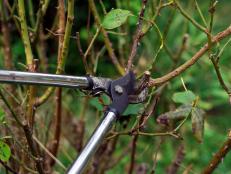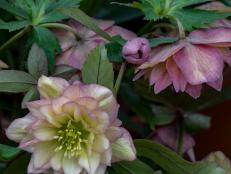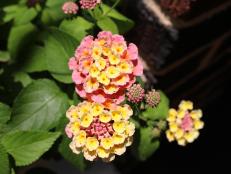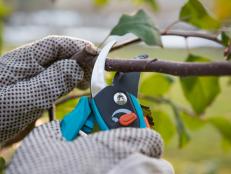Pruning Roses During Winter
See why you should prune your roses when it's chilly outside.
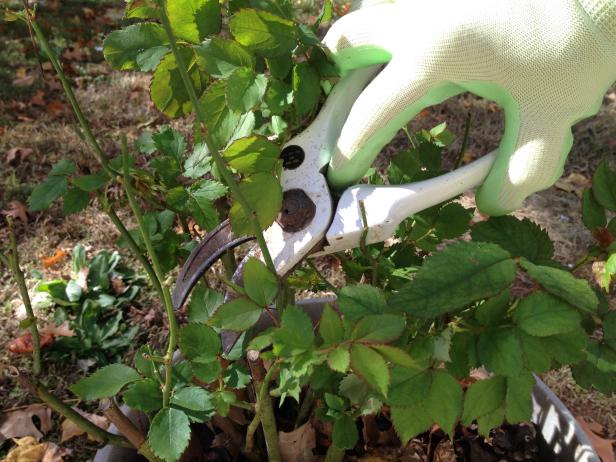
Lynn Coulter

For most gardeners, it’s time to put the garden to bed when the mercury starts dropping. But late winter is an ideal time to prune most roses, while the plants are dormant and unlikely to put out tender, new growth that would be damaged in freezing weather.
It’s usually safe to prune roses in January or February, but perfect timing really depends on the type of roses you’re growing and your hardiness zone. If you’re not sure when to cut, watch your plants grow for a season. Roses that bloom on new growth in that season, such as floribundas and many hybrid teas, should be pruned in early spring, while they’re still dormant or just before they break dormancy. (You’ll know they’re about to break dormancy when you see the leaf buds start to swell.)
12 Rose Garden Design Tips
See All PhotosIf your roses bloom early, on canes that they produced in the previous year, wait until after the flowers finish before pruning. Ramblers fall into this category.
It’s not necessary to prune miniature roses unless you simply want to shape them up. Other roses, including damasks, mosses and Albas, also can be left unpruned unless you need to remove dead canes. If you’re still in doubt, do some research on the type of rose you’re growing.
You’ll need a few tools when you’re ready to prune. A pair of heavy-duty gardening gloves will help protect your hands from the fierce rose thorns. Some are made extra-long to shield your arms. You’ll also want a pair of bypass hand pruners for small branches up to 2 inches in diameter, and loppers, or long handled pruners, for thicker canes. To avoid spreading plant diseases, make sure your cutting blades are clean. Sterilize pruning shears in a 20 percent bleach and water mixture (1 part household bleach to 4 parts water) or with equal parts Lysol and water to control the spread of diseases. Sharpen them, if needed, so you won’t leave ragged cuts.
Before you make the first snip, stand back, look at your bush, and decide how to shape it. Your goal is to open up the center of each plant to allow good air circulation and plenty of sunlight.
Begin at the base of the rose, making cuts at a 45-degree angle. Cut about ¼ inch above outward facing buds, so new growth will grow away from, and not into, the center. Remove all dead canes, which are typically black, brown or shriveled.
Gently brush away any dirt covering the suckers, or the new, unwanted growth coming from below the bud union. (The bud union is the swollen spot, or “knot,” above the roots; the rose canes grow from it.) Be careful not to disturb the roots of the rose while you’re looking for the suckers.

Suckers must be cut off the plant itself, not just cut at ground level, or they’ll “suck,” or steal nutrients from the bush when it begins actively growing. Also prune away any canes that are less than 2” inches in diameter (about the size of a pencil). Cut out any branches that cross or rub against each other.
Aim to leave four to six healthy canes per bush. The canes can be left 12” to 48” high, depending on your preference or the recommended height for the type of rose you’re growing.
It’s not necessary to seal the pruning cuts, but if cane borers are a problem in your area, dab the cuts with white household glue to help prevent them from entering the wood.
Michael Marriott, a senior rosarian and rose garden designer with David Austin Roses, says you shouldn’t fret too much about pruning English roses, which are vigorous and tough.
The David Austin Rose company website recommends pruning your English roses about as much, or as little, as you like in the summertime. Simply keep the roses at the height, and in the shape, you prefer. When you cut back flowering stems, leave 2 or 3 buds on the summer growth. In the cold season, prune English roses by 1/3 to 2/3 of their height.
Almost all roses will quickly grow back and recover if you make any mistakes. Just watch how your roses bloom and grow after you’ve pruned them, and they’ll show you how to best prune them next time.









